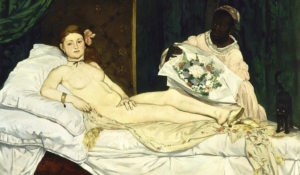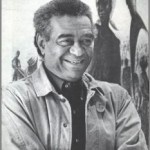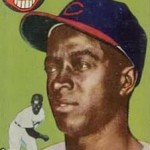40 Years a Slave: The Extraordinary Tale of an African Prince Stolen from His Kingdom
Abdulrahman Ibrahim Ibn Sori was West African royalty before he was enslaved on a Mississippi plantation.
Image: Abdulrahman Ibrahim Ibn Sori (Library of Congress)
(History) After a shackled journey across the Atlantic, Abdulrahman Ibrahim Ibn Sori was desperate to make the man about to purchase him, Thomas Foster, understand his terrible mistake: he wasn’t supposed to be enslaved, the 26-year-old was the heir to one of Africa’s most influential kingdoms.
Instead of freedom, his protestations earned him the derisive nickname “Prince,” which he’d carry for his next 40 years of enslavement.
Sori had arrived in Natchez, Mississippi after being kidnapped by enemy troops in 1788 in his native Fouta Djallon in what is now Guinea. The powerful royal was sold to slave traders for a few muskets and rum at the height of the global slave trade, when an estimated 80,000 Africans were being captured, chained, and shipped across the Atlantic Ocean every year.
Despite the scale of the slave trade—Sori was one of 12.5 million Africans forced from their homes and sold to the New World between 1525 and 1866—detailed narratives of individuals forced into bondage are limited, particularly of Muslim slaves like Sori. He is an exception; a highly educated aristocrat, his dramatic quest for freedom would eventually catapult him to national celebrity which means his remarkable life is more documented than most. (more)
Musée d’Orsay Renames Manet’s ‘Olympia’ and Other Works in Honor of Their Little-Known Black Models
Marie-Guillemine Benoist’s “Portrait of Madeleine,” previously titled “Portrait of a Black Woman,” hangs alongside Manet’s newly christened “Laure”
(Smithsonian) A new exhibition at the Musée d’Orsay places the spotlight on modern art’s oft-unheralded black models, affording these previously anonymous sitters a semblance of agency by (temporarily) renaming classic canvases in honor of their newly identified subjects. Titled “Black Models: From Géricault to Matisse,” the show presents works including Édouard Manet’s “Laure,” a subversive nude formerly dubbed “Olympia,” and Marie-Guillemine Benoist’s “Portrait of Madeleine,” an allegorical painting previously known by the generic name “Portrait of a Black Woman.”
As Jasmine Weber reports for Hyperallergic, the Parisian presentation is an expanded version of “Posing Modernity: The Black Model from Manet and Matisse to Today,” an exhibition that premiered at Columbia University’s Wallach Art Gallery last October. Based on then-graduate student Denise Murrell’s thesis of the same title—born, in turn, out of Murrell’s frustration over the lack of scholarship surrounding black women in the art canon—the New York City show brought together more than 100 paintings, sculptures, photographs and sketches in a study of overlooked black models. (more)
Robert T. McDaniel: Fort Worth’s last member of elite black Tuskegee Airmen dies at 96
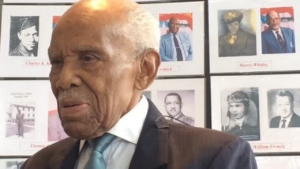 (Fort Worth Star-Telegram) Fort Worth’s last surviving member of the Tuskegee Airmen died Tuesday (March 19) at the age of 96.
(Fort Worth Star-Telegram) Fort Worth’s last surviving member of the Tuskegee Airmen died Tuesday (March 19) at the age of 96.
Robert T. McDaniel was one of the elite black airmen who flew combat aircraft in World War II at a time when the military was segregated.
McDaniel, along with about 330 other surviving Tuskegee Airmen, were invited to Barack Obama’s inauguration in 2009. The group was also commemorated in the George Lucas movie “Red Tails” in 2012.
“He is the last of the Mohicans if you will,” said Sarah Walker, president of Tarrant County Black Historical and Genealogical Society. (more)
TIPHC Bookshelf
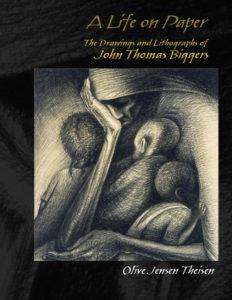 Published scholarship on black history in Texas is growing and we’d like to share with you some suggested readings, both current and past, from some of the preeminent history scholars in Texas and beyond. We invite you to take a look at our bookshelf page – including a featured selection – and check back as the list grows. A different selection will be featured each week. We welcome suggestions and reviews. This week, we offer, “A Life on Paper: The Drawings and Lithographs of John Thomas Biggers,” by Olive Jensen Theisen.
Published scholarship on black history in Texas is growing and we’d like to share with you some suggested readings, both current and past, from some of the preeminent history scholars in Texas and beyond. We invite you to take a look at our bookshelf page – including a featured selection – and check back as the list grows. A different selection will be featured each week. We welcome suggestions and reviews. This week, we offer, “A Life on Paper: The Drawings and Lithographs of John Thomas Biggers,” by Olive Jensen Theisen.
John Thomas Biggers (1924–2001) was a major African American artist who inspired countless others through his teaching, murals, paintings, and drawings. After receiving conventional art training at Hampton Institute and Pennsylvania State, he had his personal and artistic breakthrough in 1957 when he spent six months in the newly independent country of Ghana. From this time forward, he integrated African abstract elements with his rural Southern images to create a personal iconography. His new approach made him famous, as his personal discovery of African heritage fit in well with the growing U.S. civil rights movement. He is best known for his murals at Hampton University, Winston-Salem University, and Texas Southern, but the drawings and lithographs that lie behind the murals have received scant attention—until now.
Theisen interviewed Dr. Biggers during the last thirteen years of his life and was welcomed into his studio innumerable times. Together, they selected representative works for this volume, some of which have not been previously published for a general audience. After his death in 2001, his widow continued to work closely with Theisen, resulting in a book that is intimate and informative for both the scholar and the student.
“Dr. Theisen had unequaled access to Dr. Biggers’ widow, as well as many of his friends and family. This unprecedented access gives the book a completeness and readability that sets it apart from other literature about the artist and gives the reader a sense of the character of the man as well as of his art. Its charm and readability will appeal to a wide range of readers.”—R. William McCarter, Regents Professor Art, University of North Texas.
This Week in Texas Black History
Apr. 7
 On this day in 1954, All-Pro running back Tony Dorsett was born in Rochester, Pa. At the University of Pittsburgh, Dorsett won the 1976 Heisman Trophy and was a first round pick (No. 2 overall) by the Dallas Cowboys in the 1977 NFL Draft. He was Offensive Rookie of the Year and in 1994 was inducted to both the Pro Football and College Football halls of fame. That same year, he was also enshrined in the Texas Stadium Ring of Honor. Dorsett rushed for 12,739 yards (8th all-time) and 77 touchdowns in his 12-year career. His 99-yard touchdown run on January 3, 1983 against the Minnesota Vikings is the longest run from scrimmage in NFL history. See the run here.
On this day in 1954, All-Pro running back Tony Dorsett was born in Rochester, Pa. At the University of Pittsburgh, Dorsett won the 1976 Heisman Trophy and was a first round pick (No. 2 overall) by the Dallas Cowboys in the 1977 NFL Draft. He was Offensive Rookie of the Year and in 1994 was inducted to both the Pro Football and College Football halls of fame. That same year, he was also enshrined in the Texas Stadium Ring of Honor. Dorsett rushed for 12,739 yards (8th all-time) and 77 touchdowns in his 12-year career. His 99-yard touchdown run on January 3, 1983 against the Minnesota Vikings is the longest run from scrimmage in NFL history. See the run here.
Apr. 9
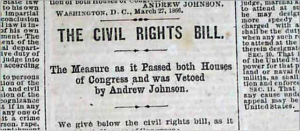 On this day, the Civil Rights Act of 1866 became effective, granting citizenship and the same rights enjoyed by white citizens to all male persons in the United States “without distinction of race or color, or previous condition of slavery or involuntary servitude.” President Andrew Johnson‘s veto of the bill was overturned by a two-thirds majority in both houses of Congress, and the bill became law.
On this day, the Civil Rights Act of 1866 became effective, granting citizenship and the same rights enjoyed by white citizens to all male persons in the United States “without distinction of race or color, or previous condition of slavery or involuntary servitude.” President Andrew Johnson‘s veto of the bill was overturned by a two-thirds majority in both houses of Congress, and the bill became law.
Apr. 9
 On this day in 1895, blues singer and guitarist Bowdie Glenn Lipscomb was born in Navasota. As a youngster, Lipscomb would take the name “Mance,” short for “Emancipation,” the name of an elder family friend. Lipscomb, who preferred to be known as a “songster” because of the variety of songs he sang, was discovered and first recorded in 1960 during the country blues revival. The annual Navasota Blues Festival is held in his honor. A bronze sculpture of him was unveiled in Mance Lipscomb Park in Navasota on 2011.
On this day in 1895, blues singer and guitarist Bowdie Glenn Lipscomb was born in Navasota. As a youngster, Lipscomb would take the name “Mance,” short for “Emancipation,” the name of an elder family friend. Lipscomb, who preferred to be known as a “songster” because of the variety of songs he sang, was discovered and first recorded in 1960 during the country blues revival. The annual Navasota Blues Festival is held in his honor. A bronze sculpture of him was unveiled in Mance Lipscomb Park in Navasota on 2011.
Apr. 10
 Golfer Lee Elder, a Dallas native, became the first African-American to play in the Masters Tournament on this day in 1975. Leading to the tournament, Elder endured hate mail that said he would never make it to Augusta and that he should “watch your step when you get to Augusta,” and that “there will be blood.” Undaunted, Elder competed in the tournament, but missed the cut after shooting 152 (8-over par) for the first two rounds.
Golfer Lee Elder, a Dallas native, became the first African-American to play in the Masters Tournament on this day in 1975. Leading to the tournament, Elder endured hate mail that said he would never make it to Augusta and that he should “watch your step when you get to Augusta,” and that “there will be blood.” Undaunted, Elder competed in the tournament, but missed the cut after shooting 152 (8-over par) for the first two rounds.
Apr. 12
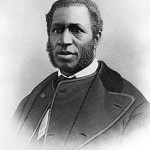 Richard Harvey Cain was born on this day in 1825 in Virginia to free parents. Cain was a political and civic leader of the Charleston, South Carolina reconstruction era. In 1848, he joined the African Methodist Episcopal Church and was a minister in Muscatine, Iowa. He became a bishop of the church in 1880 and was assigned to the Louisiana and Texas district. That same year, he helped found Paul Quinn College in Austin, serving as the school’s president until 1884.
Richard Harvey Cain was born on this day in 1825 in Virginia to free parents. Cain was a political and civic leader of the Charleston, South Carolina reconstruction era. In 1848, he joined the African Methodist Episcopal Church and was a minister in Muscatine, Iowa. He became a bishop of the church in 1880 and was assigned to the Louisiana and Texas district. That same year, he helped found Paul Quinn College in Austin, serving as the school’s president until 1884.
Apr. 13
On this date in 1924, internationally acclaimed artist, sculptor, teacher and philosopher John Biggers was born in Gastonia, North Carolina. After studying at Hampston Institute and Penn State University, Biggers moved to Houston in 1949 and became founding chairman of the art department at Texas Southern University, then called Texas State University for Negroes. He held the position for 34 years during which he initiated a mural program for art majors in which every senior student was expected to complete a mural on campus: there are now 114 such murals on the Texas Southern campus. In 1957, with the help of a grant from UNESCO (United Nations Educational, Scientific and Cultural Organization), Biggers was one of the first American black artists to visit Africa to study African traditions and culture.
Apr. 13
On this day in 1952 David Hoskins started for the Dallas Eagles making him the first black player in the Class AA Texas League. The Eagles were affiliated with the Cleveland Indians. Hoskins was born in Greenwood, Mississippi, on August 3, 1925 but moved to Flint, Mich. with his family in 1936. He played for the Homestead Grays in the Negro American League and in 1948 broke a color barrier as an outfielder with Grand Rapids of the Central League. With the Eagles, Hoskins was an immediate draw and by the season’s end had pitched before sellout crowds at every stadium in the league and led the league in wins (22), complete games (26), innings pitched (280), and had an ERA of 2.12. He also hit .328 and was an all-star selection. He was inducted into the Texas League Hall of Fame in 2004. In 1953, Hoskins was signed by the Indians and played for two seasons, 1953-54. For his Major League career, Hoskins was 9-4 with a 3.81 ERA and .227 batting average.
Blog: Ron Goodwin, Ph.D., author, PVAMU history professor
Ron Goodwin is an assistant professor of history at Prairie View A&M University. Even though he was a military “brat,” he still considers San Antonio home. Like his father and brother, Ron joined the U.S. Air Force and while enlisted received his undergraduate degree from Texas Lutheran University in Seguin, Texas. After his honorable discharge, he completed graduate degrees from Texas Southern University. Goodwin’s book, Blacks in Houston, is a pictorial history of Houston’s black community. His most recent book, Remembering the Days of Sorrow, examines the institution of slavery in Texas from the perspective of the New Deal’s Slave Narratives.
Recent Posts
The Everlasting Light
Ye are the light of the world. A city that is set on an hill cannot be hid. Neither do men light a candle, and put it under a bushel, but on a candlestick; and it givith light unto all that are in the house. Let your light so shine before men, that they may see your good works, and glorify your Father which is in heaven. — Matthew 5: 14-16
This is the month set aside to honor…(more)
The Return of the Silent Majority
Fifty years ago, in January 1969, Richard Nixon was sworn in as the thirty-seventh president of the United States. His legacy as President was marred by the Watergate investigations and his eventual resignation from office which overshadowed the way in which he won the office. His central campaign rhetoric was designed to garner support from white Southerners (otherwise known in history as the “Silent Majority”) whose racial beliefs leaned heavily towards the support of white…(more)
Submissions wanted
Historians, scholars, students, lend us your…writings. Help us produce the most comprehensive documentation ever undertaken for the African American experience in Texas. We encourage you to contribute items about people, places, events, issues, politics/legislation, sports, entertainment, religion, etc., as general entries or essays. Our documentation is wide-ranging and diverse, and you may research and write about the subject of your interest or, to start, please consult our list of suggested biographical entries and see submission guidelines. However, all topics must be approved by TIPHC editors before beginning your research/writing.
We welcome your questions or comments. Please contact Michael Hurd, Director of TIPHC, at mdhurd@pvamu.edu.

